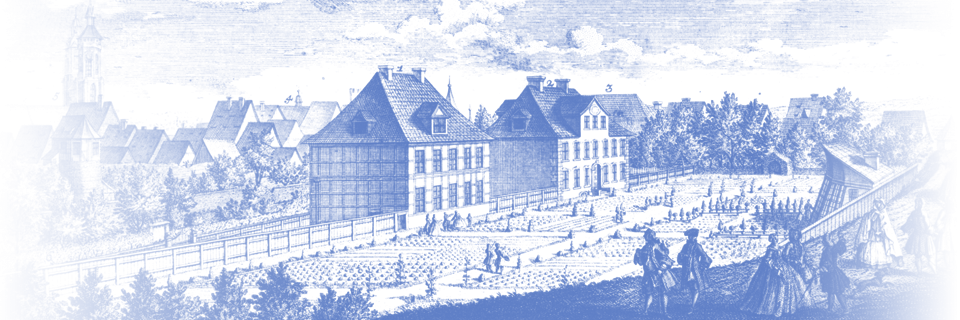Haller’s botanical work includes comprehensive inventories (Flora) of fairly large regions (Switzerland, Jena, Göttingen), monographs on plant species and families (e.g. European leeks and orchids), descriptions of botanical collecting expeditions, and a critically annotated bibliography (*Bibl. bot. 1771–72 [1215]) of all botanical writing up to his time.
After several collecting expeditions primarily in the Alps and with the help of friends, Haller published the first comprehensive compendium of Swiss flora during his time as a professor in Göttingen (*Enum. stirp. helv. 1742 [1189]). Of this volume, which was his principal botanical work, he published a second and considerably expanded edition in 1768 (*Hist. stirp. helv. 1768 [1202]). At the University of Göttingen he founded the botanical garden and developed and described its rich collection (*Enum. hort. Gott. 1753 [1241]).
Haller was a pioneer in different branches of botany. He recognised variability among plants and rejected fixity of species; he undertook exact morphological descriptions of species based on repeated observation of many samples, including in different stages of development; and he recorded the locations where samples were found along with site-specific factors. His knowledge of plant geography and altitudinal belts is well-known. Detailed synonymy of old (pre-Linnean) plant names and an attempt to establish a natural system of plants are further particular features of Haller’s botanical works. He published several of his minor botanical writings together in a volume (*Opuscula bot. 1749 [1254]).
Haller rejected the binary nomenclature with its artificial sexual system successfully propagated by his contemporary, Carl von Linné, on historical and scientific grounds. Accordingly, his names, for example for approximately 300 newly described flowering plants, are not valid, and his botanical work failed to have a major impact.
Haller compiled extensive herbaria which for the most part still exist today. The 60-volume main herbarium is located in the Muséum national d’Histoire naturelle in Paris, and a smaller one is kept at the Albrecht-von-Haller-Institut für Pflanzenwissenschaften at the University of Göttingen. Several additional plant samples can be found in the herbarium of his son, Albrecht von Haller filius (1758–1823), at the Conservatoire et Jardin botaniques in Geneva.
Research literature
Beer 1953, Boschung 2000, Drouin/Lienhard 2008, Fischer 1909, Frey 1964, Gradstein/Schwerdtfeger 2009, Lienhard 2000, Lienhard 2005, Lienhard 2007, Shteir 1977, Toellner 2002, Wagenitz 2003a, Wagenitz 2009, Zoller 1958, Zoller 1977.

